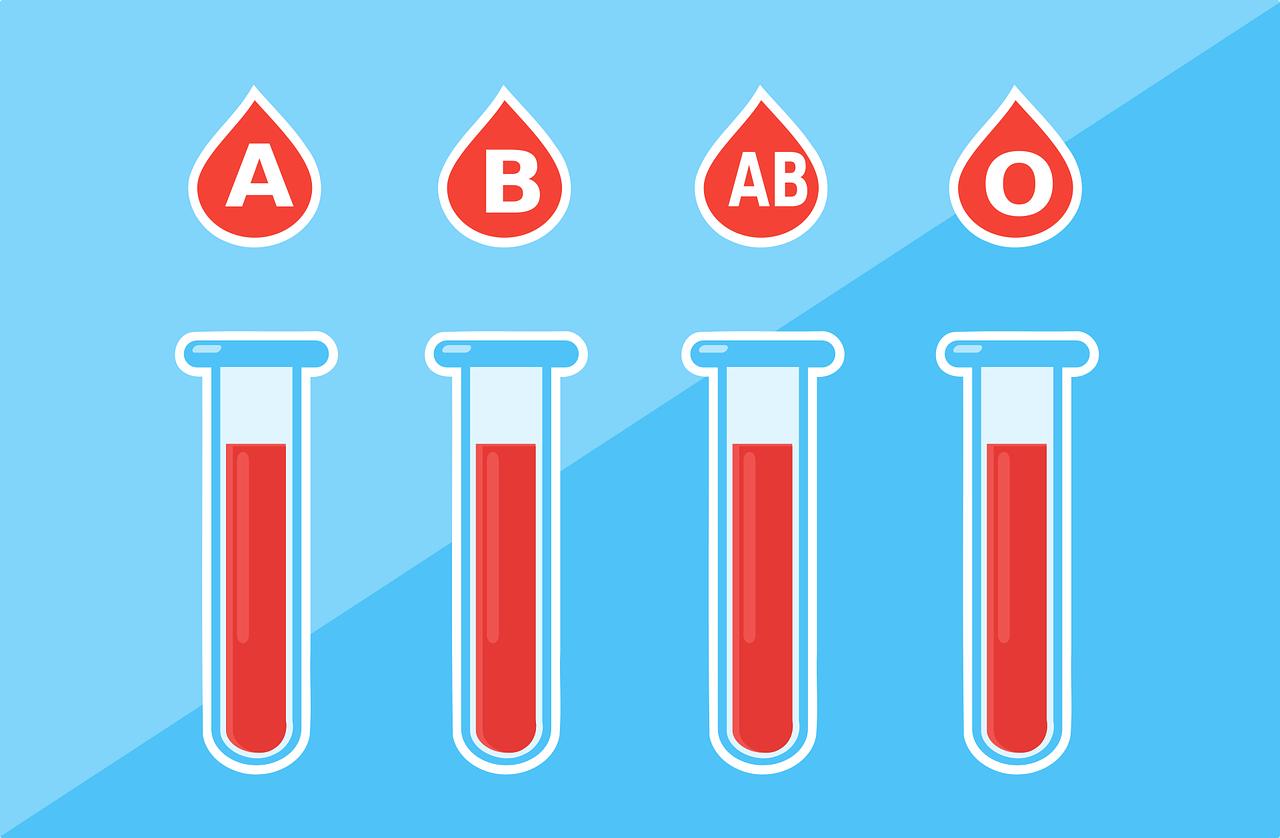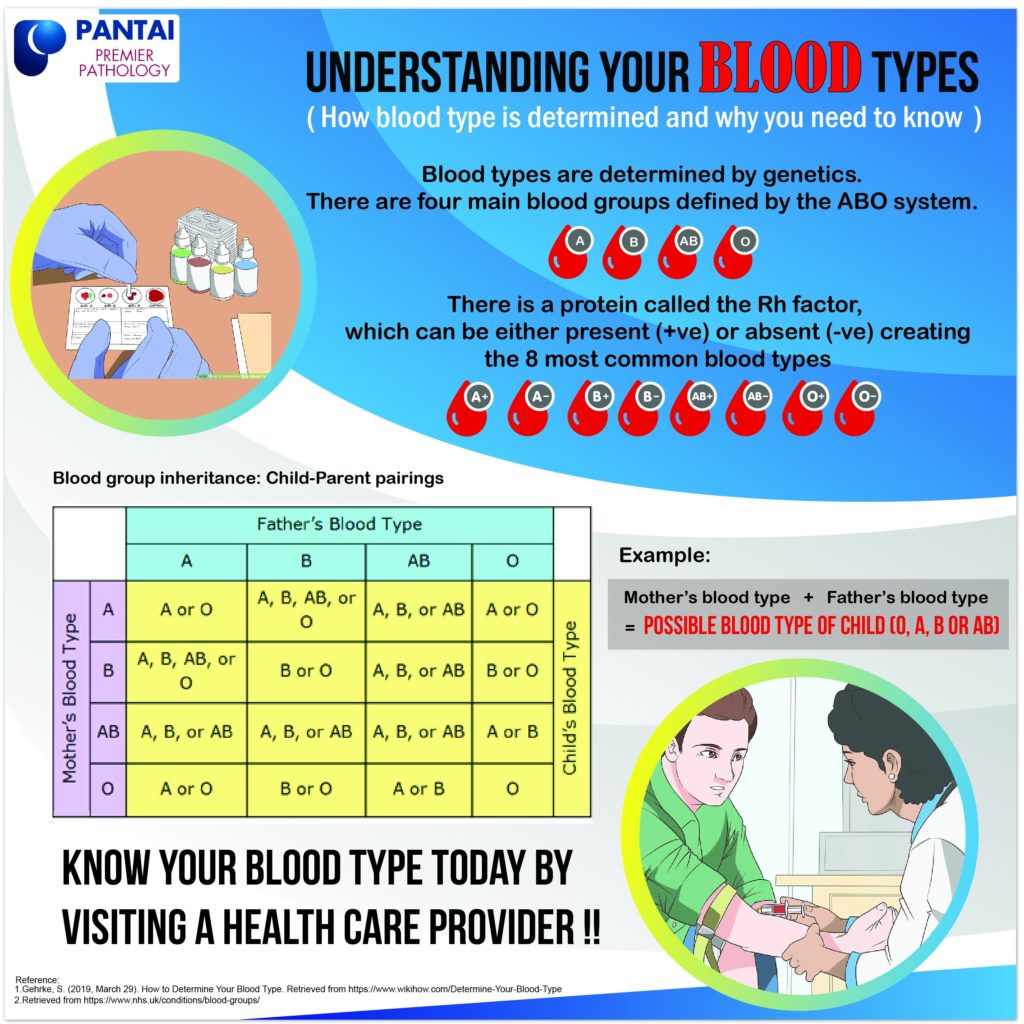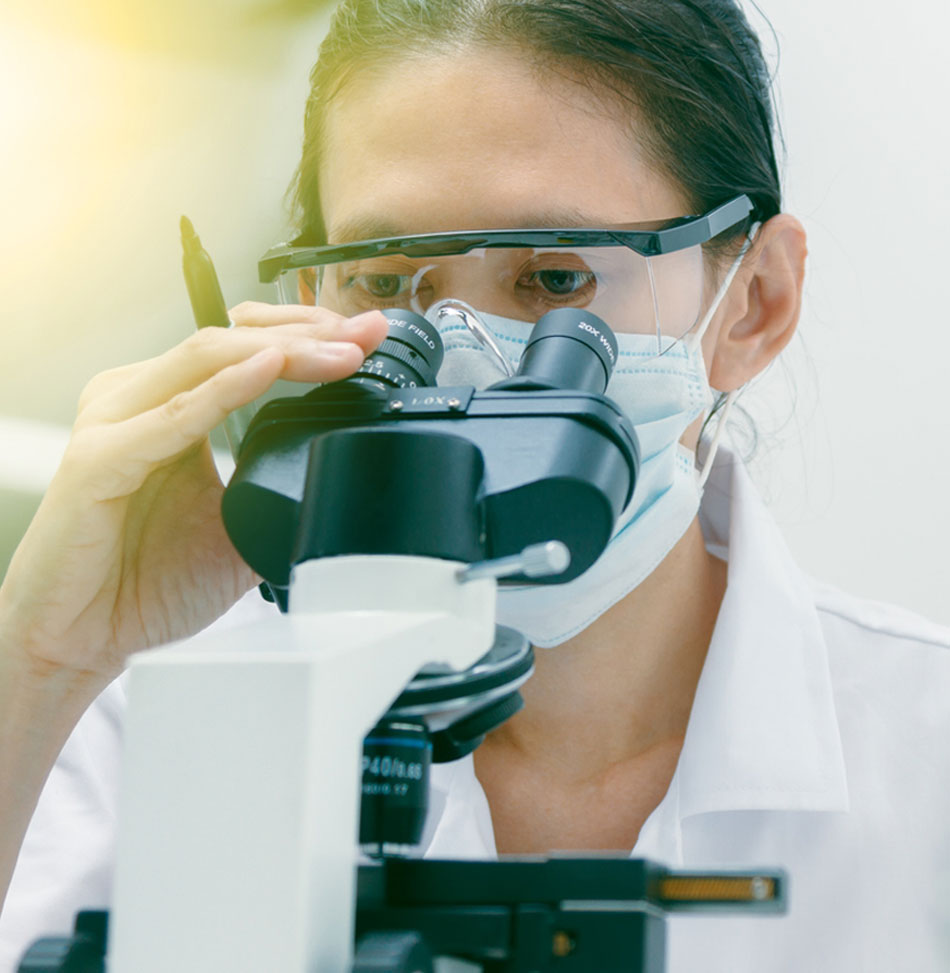Understand Your Blood Types
There are 4 major blood groups determined by the presence or absence of 2 antigens- (A and B) on the surface of red blood cells. The blood type that you have is determined by genes you inherit from your parents.
In addition, there is a protein called the Rh factor, which can be either present (+ve) or (-ve) creating the 8 most common blood types.
The Basic Elements of Blood
Most people have about 4-6 liters of blood. Your blood is made up of different kinds of cells that float in a fluid called plasma:
- Your red blood cells deliver oxygen to the various tissues in your body and remove carbon dioxide.
- Your white blood cells destroy invaders and fight infection.
- Your platelets help your blood to clot.
- Your plasma is a fluid made up of proteins and salts.
What makes your blood different from someone else’s is your unique combination of protein molecules, called antigens and antibodies.
Antigens live on the surface of your red blood cells. Antibodies are in your plasma.
The combination of antigens and antibodies in your blood is the basis of your blood type.
The Different Blood Types
There are four major blood groups and eight different blood types. Doctors call this the ABO Blood Group System.
The groups are based on whether or not you have two specific antigens — A and B:
- Group A has the A antigen and B antibody.
- Group B has the B antigen and the A antibody.
- Group AB has A and B antigens but neither A nor B antibodies.
- Group O doesn’t have A or B antigens but has both A and B antibodies.
There’s also a third kind of antigen called the Rh factor. You either have this antigen (meaning your blood type is “Rh+” or “positive”), or you don’t (meaning your blood type is “Rh-” or “negative”). So, from the four blood groups, there are eight blood types:
- A positive or A negative
- B positive or B negative
- AB positive or AB negative
- O positive or O negative
Source: WebMD Medical Reference




